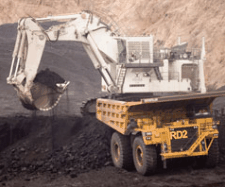
The Australian Bureau of Statistics (ABS) has just released trade data for the month of September, with Australia’s trade deficit narrowing to a seasonally-adjusted -$1,456 million, from -$1,876 million in August. July’s and August’s trade balances were also revised up, from -$1,530 million to -$1,234 million (July), and from -$2,027 million to -$1,876 million (August).
It was the ninth consecutive month that Australia has recorded a monthly trade deficit (see below chart).
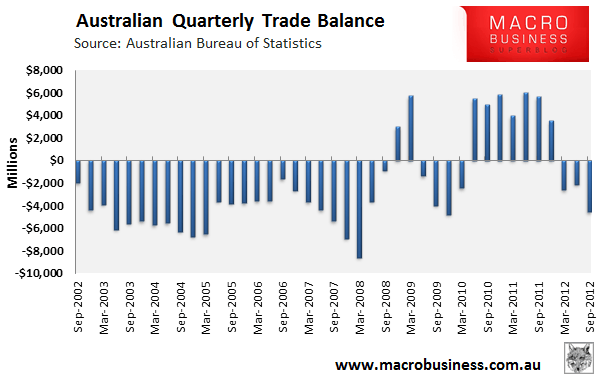
In seasonally adjusted terms, exports fell $158m (1%) to $24,166m. The fall in exports was more than offset by a -$577m (-2%) fall in imports to $25,623m.
Australia’s major export – iron ore (19% share) – and third biggest export – gas (6% share) – fell by -$715 million and $343 million respectively over the month, whereas Australia’s second biggest export – coal (18% share) – rose by $334 million (see below chart).
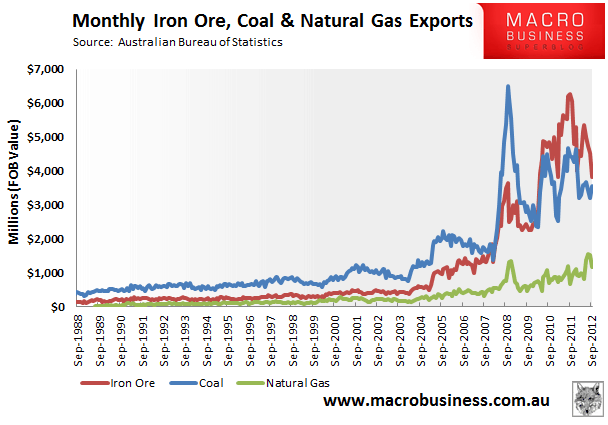
Exports to China fell by -$368 million (-7%) over the month, taking its share of total exports to 26% from 27% in August. Exports to Japan also fell by $742 million (-16%), taking its share of total exports to 20% from 22% in August. By contrast, exports to India rose by $230 million (29%) in September, taking its share of total exports to 5% from 4% in August (see below chart).
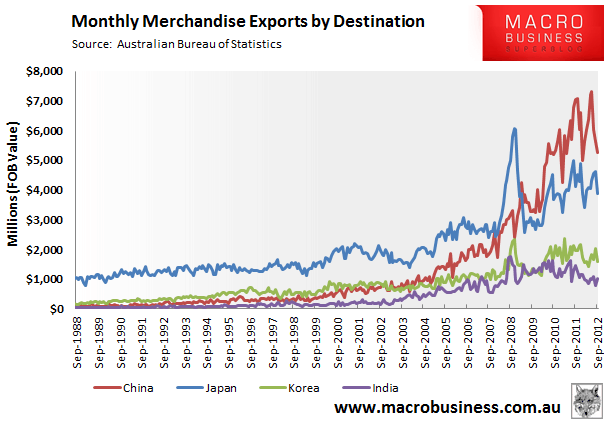
Given their status as Australia’s major producers of iron ore (Western Australia) and coal (Queensland), Western Australia and Queensland continued to dominate the nation’s exports in September. Western Australia alone accounted for 44% of Australia’s merchandise exports in August, much of which was iron ore (see below chart).
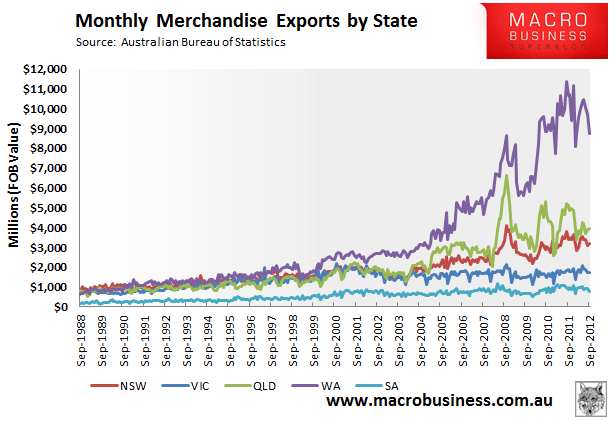
Western Australia continues to hold-up Australia’s trade balance, recording a whopping (albeit lower) surplus of $5,774 million in September, again mostly on the back of iron ore exports (see below chart).
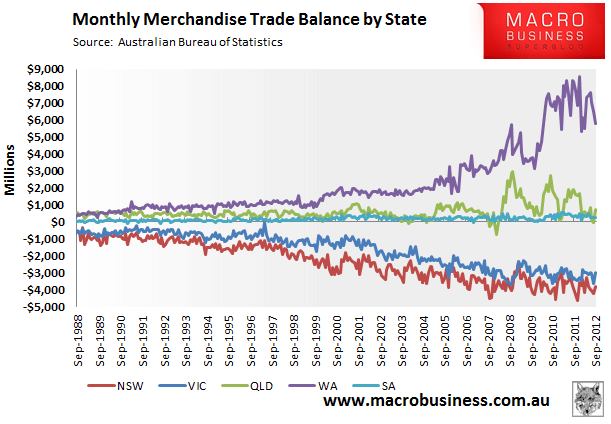
Finally, Australia’s services trade balance worsened slightly over the month (-$31 million), but has essentially stabilised after a horror run since late-2008 on account of the high Australian dollar (see below charts).
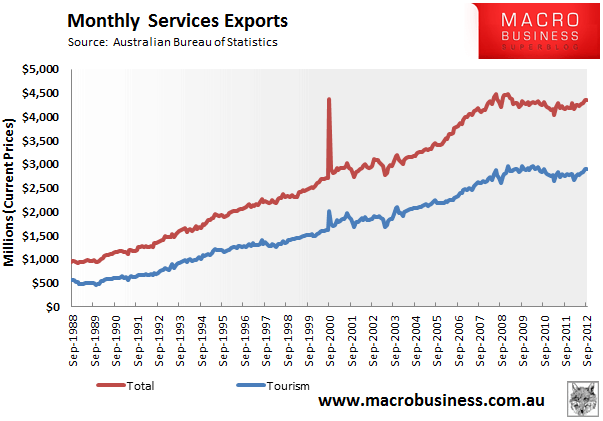
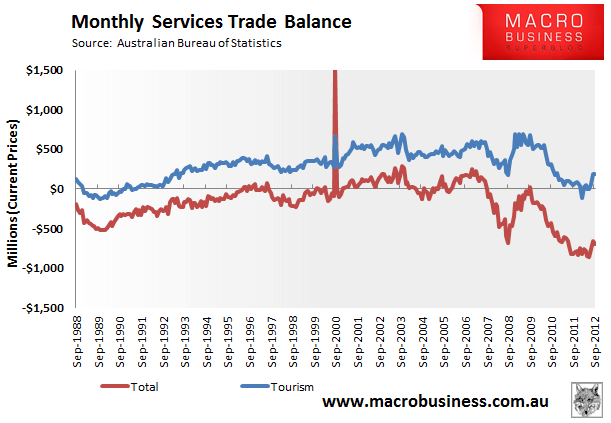
Despite the recent recovery and stabilisation of iron ore prices, coal prices (particularly thermal) have continued to trend down which, when combined with the downward adjustment to quarterly foreshadowing larger trade deficits over coming months as exports to China contract and quarterly iron ore and coal price contracts are adjusted downwards.
Twitter: Leith van Onselen. Leith is the Chief Economist of Macro Investor, Australia’s independent investment newsletter covering trades, stocks, property and yield. Click for a free 21 day trial.

